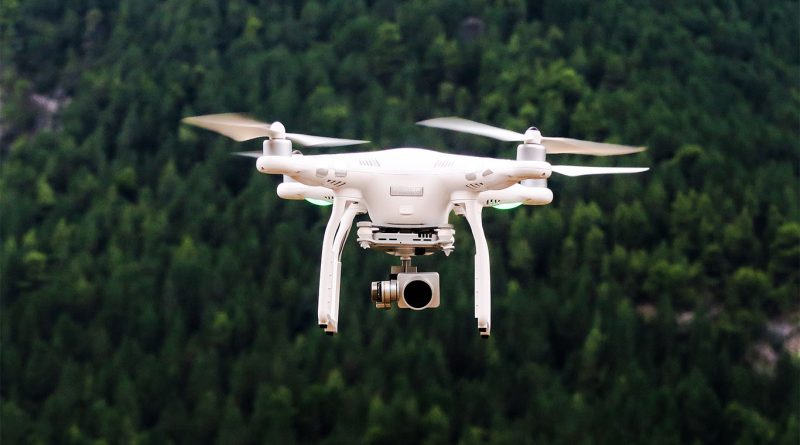New trials move the UK closer to allowing everyday drone deliveries
In a groundbreaking move that combines design and technology with advanced mechanical engineering, the UK’s Civil Aviation Authority (CAA) is spearheading trials that could transform the landscape of drone operations. These trials, crucial in the realm of logistics innovation and sustainable aviation, are set to bring beyond visual line of sight (BVLOS) drone flights into daily operation. This initiative is a key component of the UK’s strategy to modernise its airspace, blending traditional air traffic management techniques with cutting-edge civil engineering software and innovations in aviation technology.
Transforming Healthcare Logistics: The Apian London Health Bridge Project
The Apian London Health Bridge project stands out among the six pioneering projects. This venture, integrating mechanical engineering and drone technology, collaborates with Guy’s and St Thomas’ NHS Foundation Trust to initiate an on-demand drone delivery service for high-priority medical samples. Utilising civil engineering software for planning and executing flight paths, this service aims to substantially shorten turnaround times, elevate efficiency, and improve access to superior diagnostic methods. The project underscores a significant shift towards more sustainable healthcare logistics, potentially resulting in cost savings and reduced carbon footprint. Its success could serve as a model for the nationwide implementation of drone delivery within the NHS, revolutionising the future of healthcare logistics in the UK.
Pioneering Air Traffic Management: Cranfield Airport and Project BLUEPRINT
Cranfield Airport’s collaboration with Project BLUEPRINT is an exemplary fusion of civil engineering software and mechanical engineering in the aviation sector. The project aims to create a safe, efficient operating environment where crewed and uncrewed aircraft can coexist. This initiative will see the development and integration of innovative air traffic management solutions, including a ground-based detect-and-avoid network. This integration is crucial for testing various drone applications and ensuring safety for all types of aviation in the airport’s vicinity. The project’s success could set a new benchmark in air traffic management, showcasing how advanced design and technology can be seamlessly integrated into existing aviation ecosystems.
Enhancing Remote Area Connectivity: Droneprep Open Skies Cornwall
The Droneprep Open Skies Cornwall project is a testament to how design and technology can bridge gaps in remote area connectivity. The project focuses on establishing a permanent operational environment for drones to enhance essential services like healthcare delivery, emergency response, and supply chain resilience. By leveraging civil engineering software for flight planning and coordination, this initiative aims to improve connectivity in Cornwall, offering a blueprint for remote areas looking to use drone technology to enhance their services.
Advancing Infrastructure Surveying: HexCam’s Role
HexCam‘s involvement in the trials exemplifies the intersection of mechanical engineering, design and technology, and environmental sustainability. Specialising in drone-operated surveying, mapping, and 3D digital twin inspection modelling, HexCam is set to revolutionise infrastructure surveying for renewable energy projects. By employing drones, the project aims to minimise risks to surveyors and disturbances to landowners and ecologically sensitive areas, showcasing a shift towards more sustainable construction and infrastructure maintenance practices.
Scaling Drone Delivery Operations: Skyports Project TRAject
Skyports Project TRAject is at the forefront of scaling BVLOS drone delivery operations. By integrating mechanical engineering principles with advanced design and technology, the project focuses on creating systems for drones to safely detect and avoid crewed aircraft. This collaboration will initially focus on testing these systems at the Skyports Drone Services Westcott flight testing facility, with the aim of implementing these solutions for NHS drone deliveries in Scotland. The project’s success could revolutionise the concept of drone delivery, making it a reliable and scalable option for a variety of applications.
Innovating Airspace Integration: Snowdonia Aerospace Centre’s Project Dragons Eye
The Snowdonia Aerospace Centre’s Project Dragons Eye is crucial in testing new airspace integration strategies. The project will explore necessary technologies and procedures to implement the CAA’s Temporary Reserved Area (TRA) policy. This initiative demonstrates how civil engineering software, coupled with mechanical engineering expertise, can be used to develop safe and efficient strategies for integrating drones into existing airspace systems.
A Paradigm Shift in Aviation and Logistics
These trials mark a pivotal moment in the UK’s Airspace Modernisation Strategy, aiming to integrate drones safely with other airspace users. This approach, leveraging civil engineering software and mechanical engineering innovations, is essential in developing efficient, forward-thinking regulations for diverse aircraft to coexist in shared airspace. The UK’s initiative in integrating drone technology into everyday operations is a holistic approach to reimagining logistics, healthcare, infrastructure management, and the future of transportation. As these trials progress, they promise to provide invaluable insights into the evolving landscape of aviation and logistics, driven by advancements in design and technology.
